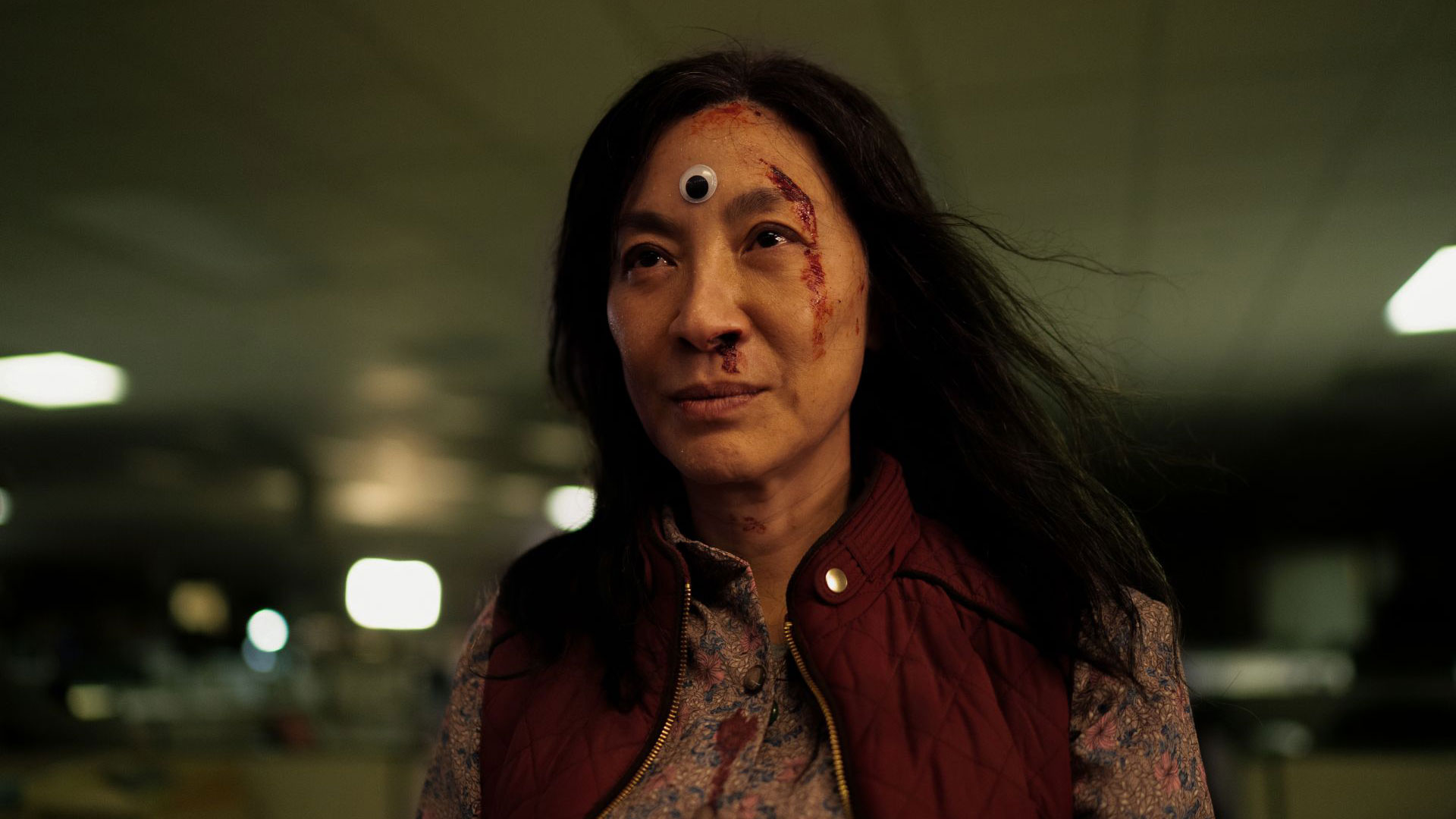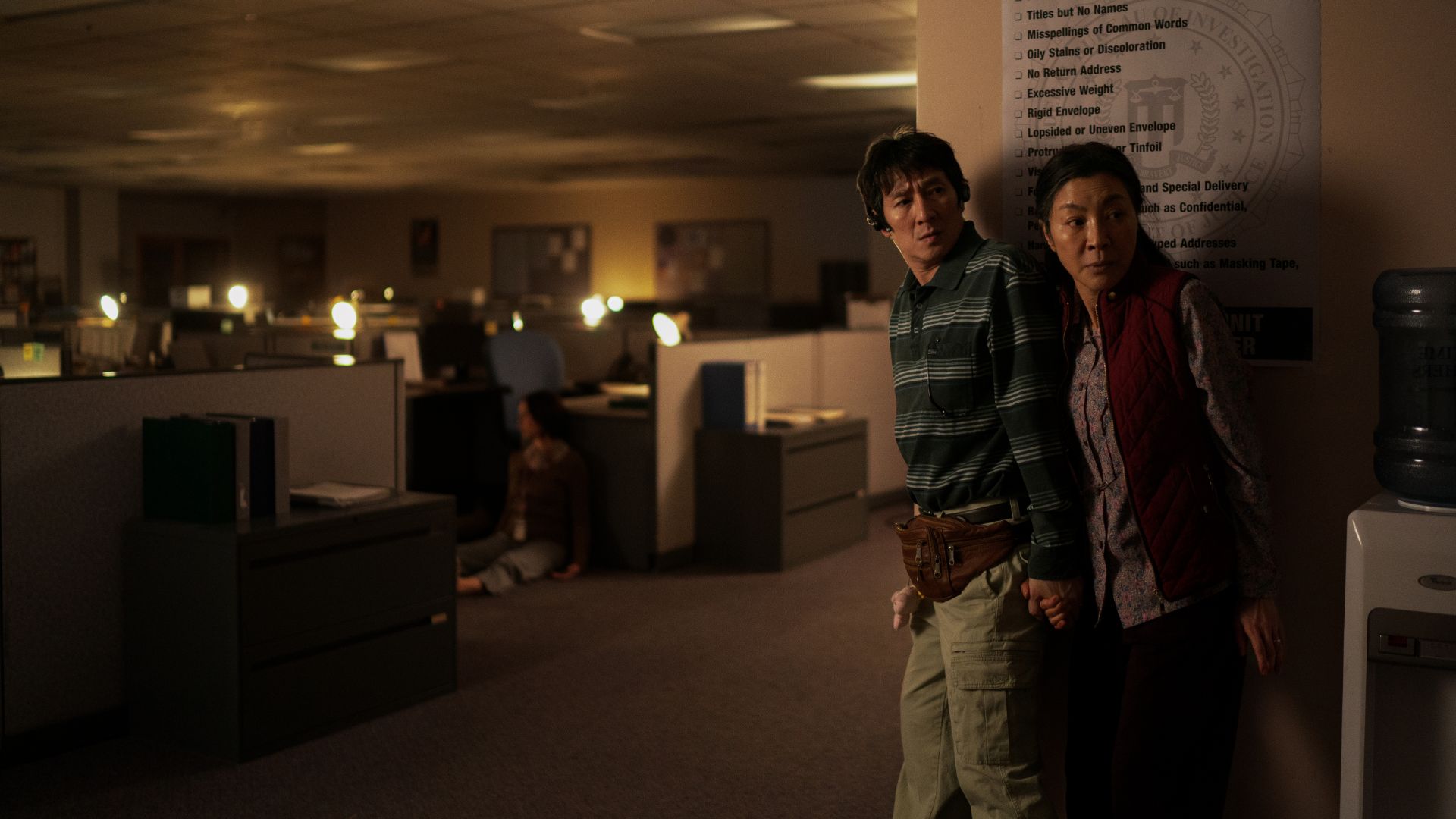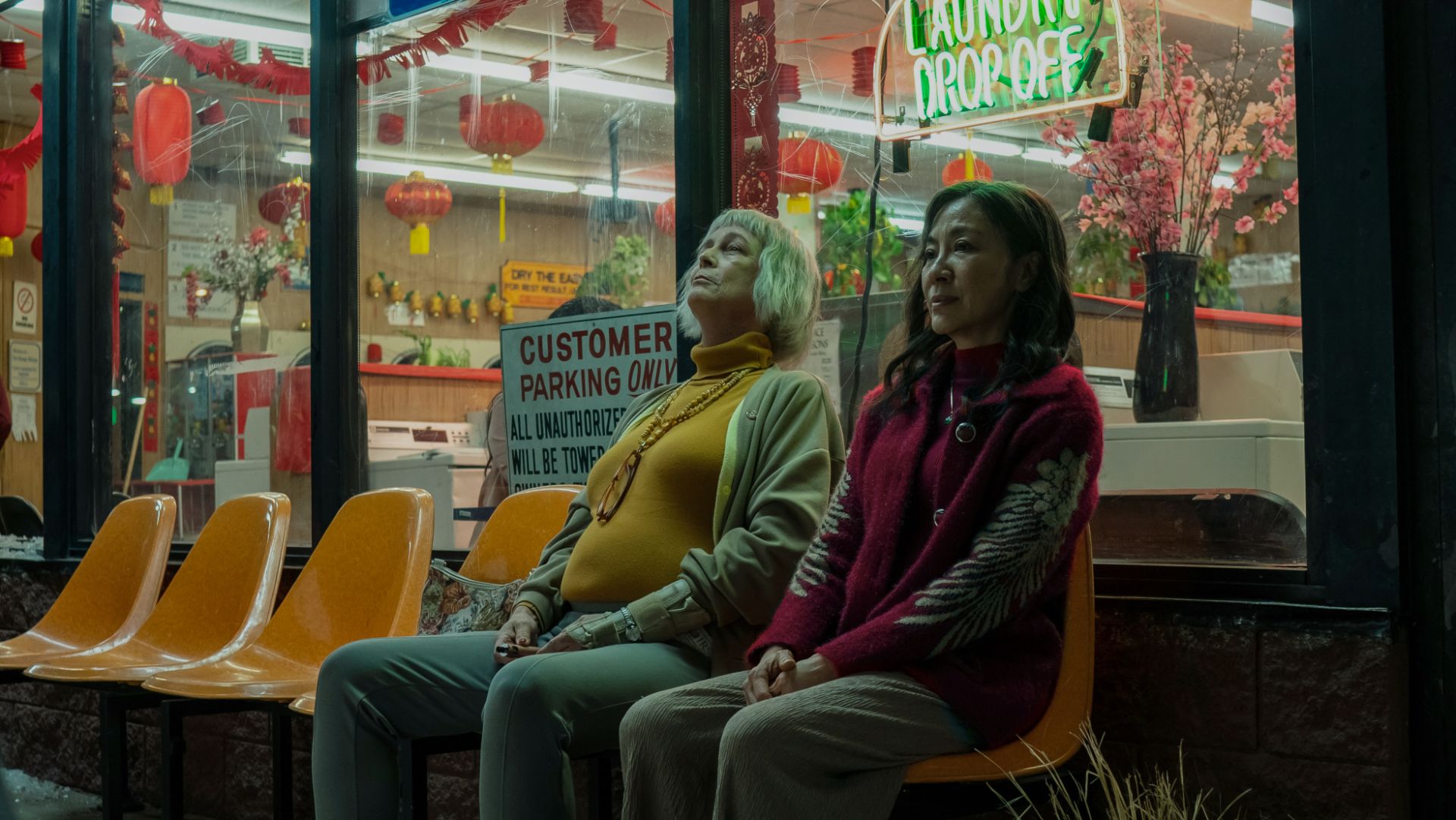You don’t get films like Everything Everywhere All At Once coming along very often. Or rather you do – weird movies get made all the time – but they don’t tend to get this type of attention, and they’re not often delivered with this much panache. That’s why it’s so exciting that Daniel Kwan and Daniel Scheinert’s ludicrous multiverse-spanning, hilarious, moving, profound and deeply silly masterpiece won big at this year’s Oscars.
The film took home seven of the ceremony’s biggest prizes: Best Picture, Best Director (Daniel Kwan, Daniel Scheinert), Best Actress (Michelle Yeoh), Best Supporting Actor (Ke Huy Quan), Best Supporting Actress (Jamie Lee Curtis), Best Film Editing, and Best Original Screenplay.
The other Best Picture Oscar nominations are fine in their own way, but they’re also predictable. There’s the worthy, wordy, terribly serious pieces with scene-stealing stand-out performances (Women Talking, Triangle of Sadness, The Banshees of Inisherin, TÁR), the popcorn spectacles (Top Gun: Maverick, Avatar: The Way of Water) the historicals and biopics (All Quiet on the Western Front, Elvis) and literally whatever film Steven Spielberg has made most recently. Fine films, all. None of them have a scene set in a world where everyone has long hot dog wieners for fingers. None of them have a dildo fight. And, alright, while those might feel a bit out of place in All Quiet on the Western Front, you have to admit they’d improve Top Gun.
In celebration of one of the most unique Oscar winners of all time, here’s some of the reasons why Everything Everywhere All At Once deserves every plaudit.

Diversity
Diversity is at the heart of Everything Everywhere All At Once. Its central family are working class Asian Americans, a demographic we rarely get to see depicted properly on screen, which allows the Daniels to explore the clash of traditional and modern values, gender norms and the role shame plays in families. Making Stephanie Hsu’s Joy overtly queer and setting that against her well-meaning but traditional mother is the engine that powers the story, and the way the themes are woven around one another is immaculate. It’s wonderfully intersectional. No-one is one-dimensional, no-one is let off the hook. Everyone is ultimately celebrated for themselves.







